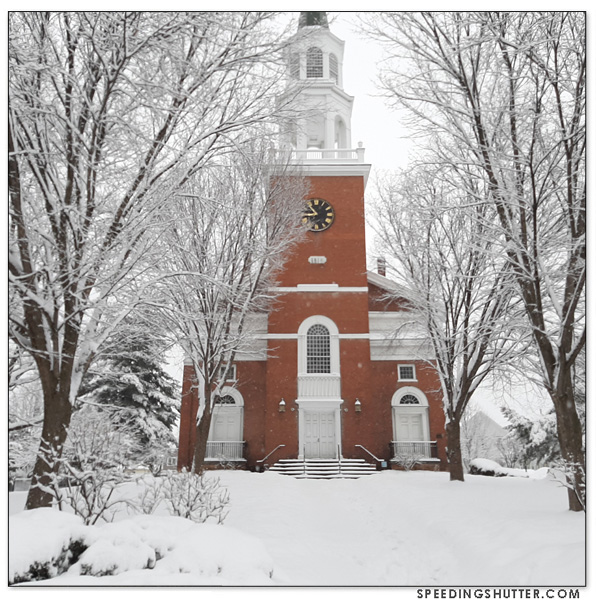5 Frames on a Snowy Day
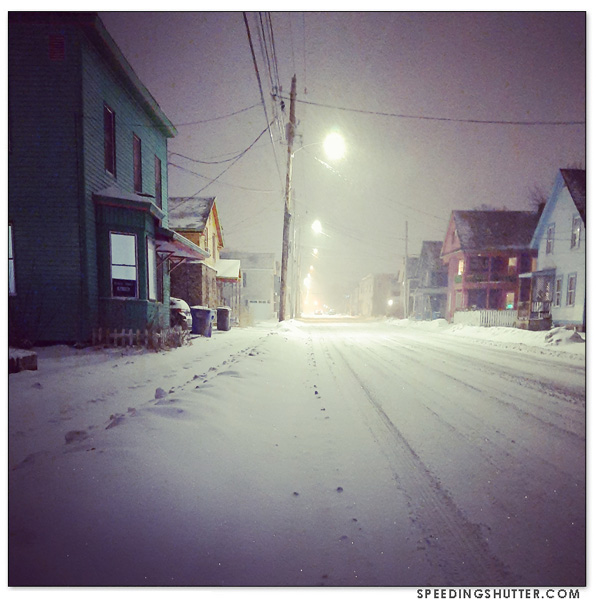
Winter is a reality in northern Vermont, where I spent most of my adult life. Winters are cold and wet here and seem to last forever. Even worse, skies are this murky gray color that defies most attempts at decent film photography. Colors won’t pop, not easily at least. The cold and the moisture in the air will play not very nice with your equipment, either, or your fingers… or your whole body. It’s just a whole different animal entirely, shooting in the cold. I kinda hate it.
Still, in a place where cold weather begins in late October and spans into April, I lose half of my year if I decide to only shoot in temperate weather. So when it starts to snow I like to use that as a unique opportunity for shooting up a roll or two.
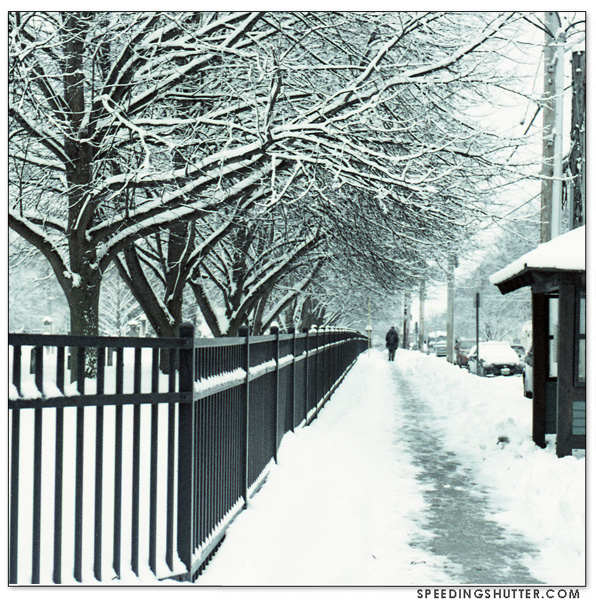
When the snow is fresh all the surfaces are smooth and white, and it has that “winter wonderland” look that everyone is so fond of. And by “everyone” I mean “everyone else,” as I am a devout hater of snow. By the next day or two the snow will be stepped through, plowed, and not quite as clean. I can (grudgingly) enjoy snow on these first days, because it really does serve up a great photographic opportunity that only nature can provide.
Shooting while it’s still snowing is my favorite way to enjoy this miserable white sky garbage. It’s very quiet out, as the freshly fallen snow has a way of absorbing much of the sounds wandering aimlessly through the air. There are fewer cars and people out as well, so this whole lovely majestic travesty is that much less visually obstructed.
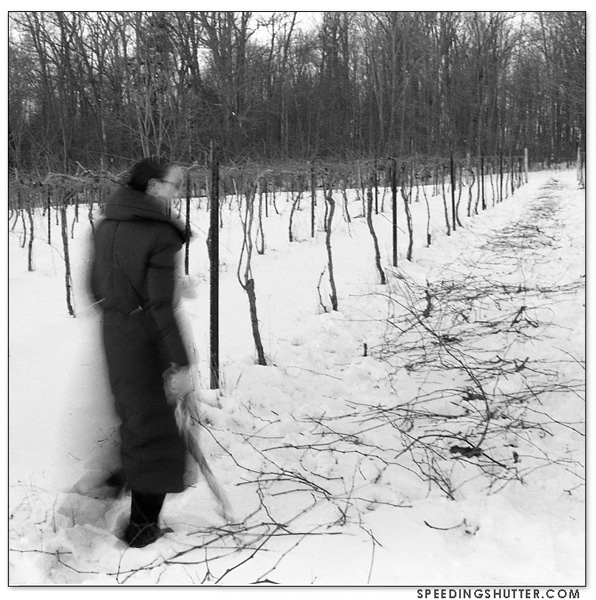
After nightfall the skies are more reflective with the falling white flakes, and the lights from downtown give the sky an eerie glow when viewed from several blocks away. I would need much faster film to capture this effect than I presently have on hand, so I’ll stick to shooting during daylight.
If it’s a sunny day I like to use Kodak Ektar, the saturated colors stand out nicely with the overwhelming whiteness of the surroundings. If it’s more overcast then I go with Portra 160 or 400. Kodak Tri-X is my go-to snowy B&W film, though occasionally I’ll throw in an Ilford Delta 100 or HP5. The brightness of the snow will force the camera’s light meter to under-expose the shot, so I adjust the exposure compensation +1 or 2 full stops.
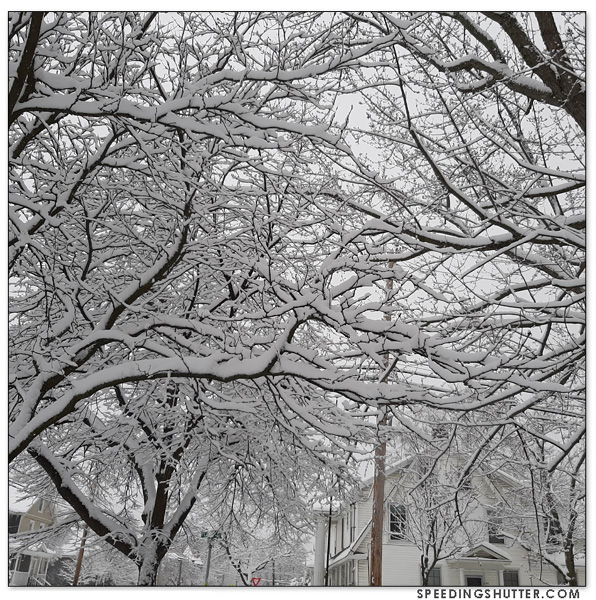
Cold and moist air can play all kinds of havoc on film and on old photo equipment. Of course it does, why wouldn’t it want to break all my favorite stuff? On these days I pack extra batteries, because batteries can just completely fail in the cold. I also pack a large plastic slide-lock bag, because when you take a cold camera into warm air all the moisture in the air will condense onto (and into) the camera, so I put it in plastic before going inside, and wait for a bit before opening the bag. Also, I don’t bring my favorite cameras, just in case things happen. Things could happen – it’s cold and snowy, proof that the Earth is cruel.
The result is a series of photos different from everything else I shoot. Not everyone gets the opportunity to try their hand at shooting in this environment, and as the years go by the opportunities will likely be more fleeting for many, as climate change alters weather patterns, as in my location 40 miles south of the Canadian border, in the region rich New Yorkers go to ski. We’ve had very little snow this year or last, and temperature averages raise every year. Now, the snow-hater in me loves this. Love it. Still, it’s a sign of things to come, and my love is wrong. Amazing, deep and satisfying, but wrong. So given the unpredictable nature of our new weather “normal,” I horrifically find myself looking forward to an afternoon snowfall, so that I may load a camera and try out a technique or capture something specific that I can only do when it snows.
